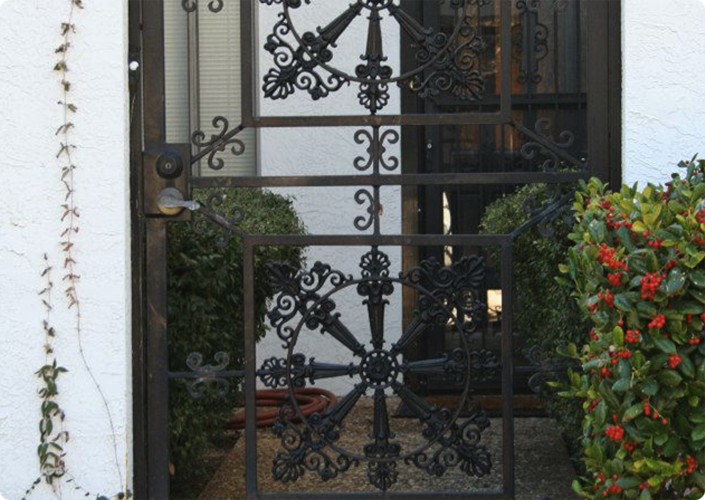iron property
The Importance of Iron Properties in Material Science
Iron, a transition metal with the atomic number 26, holds a crucial place in material science and engineering due to its unique properties and versatility. As one of the most abundant elements in the Earth's crust, iron is widely utilized in various applications ranging from construction to manufacturing, and its properties significantly influence the performance and durability of iron-based materials.
Physical Properties of Iron
Iron exhibits specific physical properties that make it an essential material in industry. It has a relatively high melting point of around 1538°C (2800°F), which allows it to maintain structural integrity under high-temperature conditions. Iron is also malleable and ductile, meaning it can be shaped and stretched without breaking. This malleability is particularly significant in processes such as forging and rolling, where iron can be transformed into various shapes and sizes to meet specific needs.
Another important physical property of iron is its high tensile strength. This strength enables iron to withstand substantial stress and load, making it an ideal choice for structural applications. Additionally, iron has a density of 7.87 g/cm³, which contributes to its weight and overall mechanical stability. Finally, iron is magnetic at room temperature, which opens up numerous applications in electronics and electromechanical devices.
Chemical Properties of Iron
Iron’s chemical properties further enhance its utility. It readily reacts with oxygen and moisture, which can lead to the formation of rust (iron oxide) when exposed to the elements. This property, while detrimental in some scenarios, has led to the development of various protective coatings, alloys, and treatments that improve the corrosion resistance of iron and extend its service life.
iron property

The ability of iron to form various oxides and compounds is also significant in various applications. For instance, the different oxidation states of iron (such as Fe²⁺ and Fe³⁺) play an essential role in catalysis and are utilized in numerous chemical reactions. Additionally, iron can be alloyed with other elements such as carbon, chromium, and nickel to produce steel and stainless steel with enhanced properties, including increased strength, corrosion resistance, and improved workability.
Applications of Iron
The diverse properties of iron lead to its wide range of applications across different fields. In construction, iron is a key material in the production of beams, columns, and reinforcement bars, providing structural support to buildings and infrastructure. In manufacturing, iron is the primary component in creating tools, machinery, and automotive parts, owing to its strength and durability.
Moreover, iron is essential in the energy sector, especially in power generation and transmission equipment. Its magnetic properties are harnessed in transformers and electric motors, while its conductivity is utilized in various wiring applications.
Conclusion
In summary, the properties of iron, both physical and chemical, play an essential role in determining its usefulness in various industries and applications. Its abundance, cost-effectiveness, and versatility make it a fundamental material in modern engineering. As technology advances, innovations in iron and its alloys continue to pave the way for enhanced material performance, sustainability, and new applications, ensuring that iron will remain a cornerstone of material science for years to come. Understanding the properties of iron is vital for engineers and scientists working to develop more efficient, durable, and sustainable materials that can meet the demands of an ever-evolving technological landscape.
-
Wrought Iron Components: Timeless Elegance and Structural StrengthNewsJul.28,2025
-
Window Hardware Essentials: Rollers, Handles, and Locking SolutionsNewsJul.28,2025
-
Small Agricultural Processing Machines: Corn Threshers, Cassava Chippers, Grain Peelers & Chaff CuttersNewsJul.28,2025
-
Sliding Rollers: Smooth, Silent, and Built to LastNewsJul.28,2025
-
Cast Iron Stoves: Timeless Heating with Modern EfficiencyNewsJul.28,2025
-
Cast Iron Pipe and Fitting: Durable, Fire-Resistant Solutions for Plumbing and DrainageNewsJul.28,2025
-
 Wrought Iron Components: Timeless Elegance and Structural StrengthJul-28-2025Wrought Iron Components: Timeless Elegance and Structural Strength
Wrought Iron Components: Timeless Elegance and Structural StrengthJul-28-2025Wrought Iron Components: Timeless Elegance and Structural Strength -
 Window Hardware Essentials: Rollers, Handles, and Locking SolutionsJul-28-2025Window Hardware Essentials: Rollers, Handles, and Locking Solutions
Window Hardware Essentials: Rollers, Handles, and Locking SolutionsJul-28-2025Window Hardware Essentials: Rollers, Handles, and Locking Solutions -
 Small Agricultural Processing Machines: Corn Threshers, Cassava Chippers, Grain Peelers & Chaff CuttersJul-28-2025Small Agricultural Processing Machines: Corn Threshers, Cassava Chippers, Grain Peelers & Chaff Cutters
Small Agricultural Processing Machines: Corn Threshers, Cassava Chippers, Grain Peelers & Chaff CuttersJul-28-2025Small Agricultural Processing Machines: Corn Threshers, Cassava Chippers, Grain Peelers & Chaff Cutters












